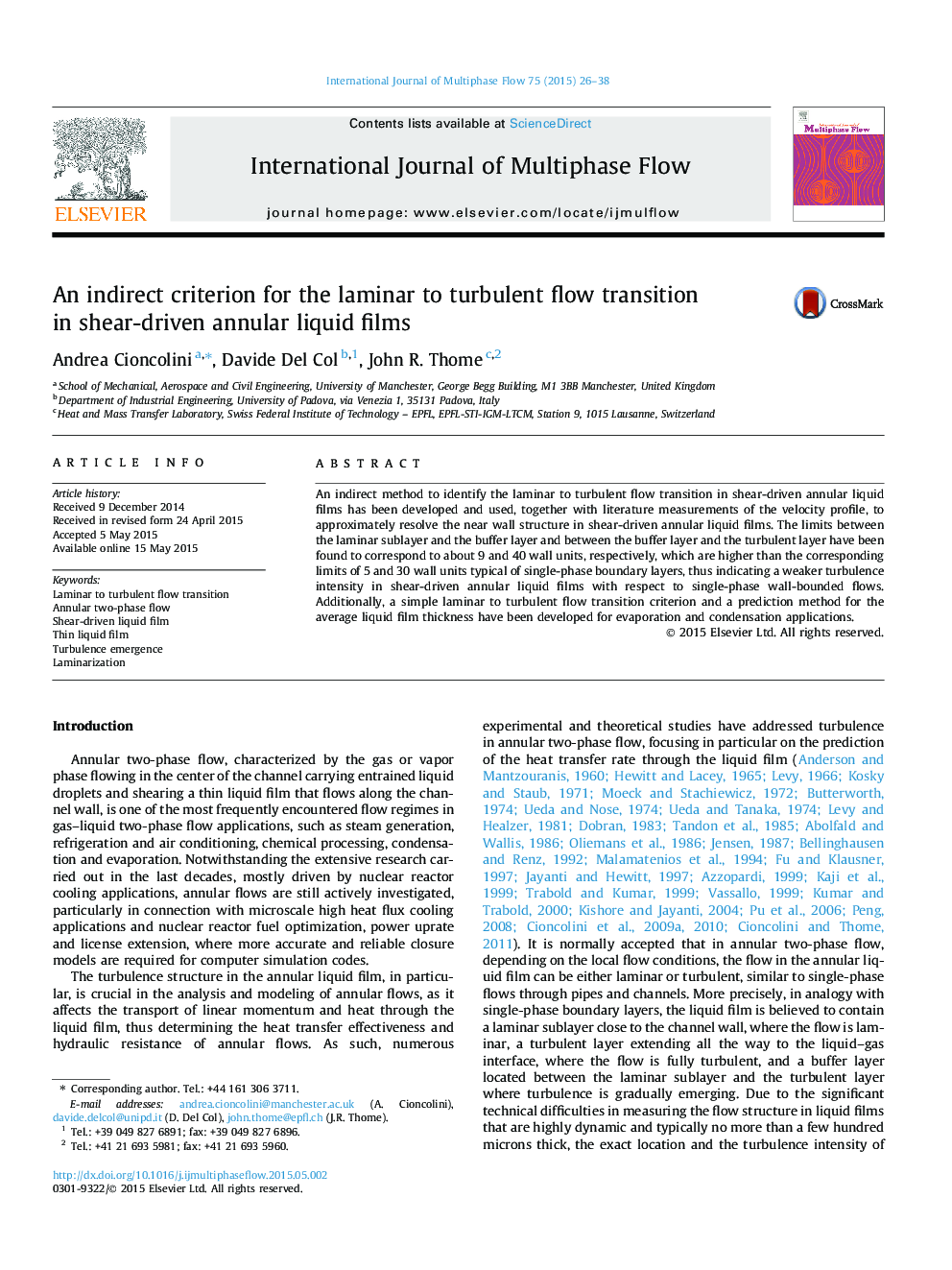| Article ID | Journal | Published Year | Pages | File Type |
|---|---|---|---|---|
| 667166 | International Journal of Multiphase Flow | 2015 | 13 Pages |
•The near wall structure in shear-driven annular liquid films is resolved.•The limit between the laminar sublayer and the buffer layer corresponds to ≈9 wall units.•The limit between the buffer layer and the turbulent layer corresponds to ≈40 wall units.•New laminar to turbulent flow transition criterion for annular liquid films.•New prediction method for the average liquid film thickness.
An indirect method to identify the laminar to turbulent flow transition in shear-driven annular liquid films has been developed and used, together with literature measurements of the velocity profile, to approximately resolve the near wall structure in shear-driven annular liquid films. The limits between the laminar sublayer and the buffer layer and between the buffer layer and the turbulent layer have been found to correspond to about 9 and 40 wall units, respectively, which are higher than the corresponding limits of 5 and 30 wall units typical of single-phase boundary layers, thus indicating a weaker turbulence intensity in shear-driven annular liquid films with respect to single-phase wall-bounded flows. Additionally, a simple laminar to turbulent flow transition criterion and a prediction method for the average liquid film thickness have been developed for evaporation and condensation applications.
Graphical abstractFigure optionsDownload full-size imageDownload as PowerPoint slide
